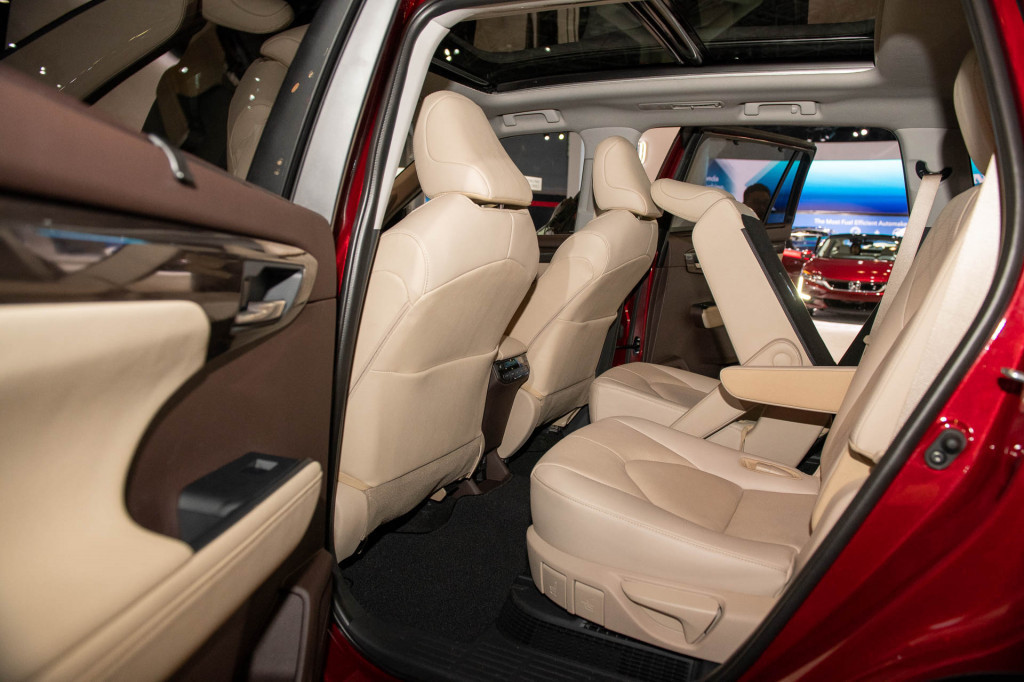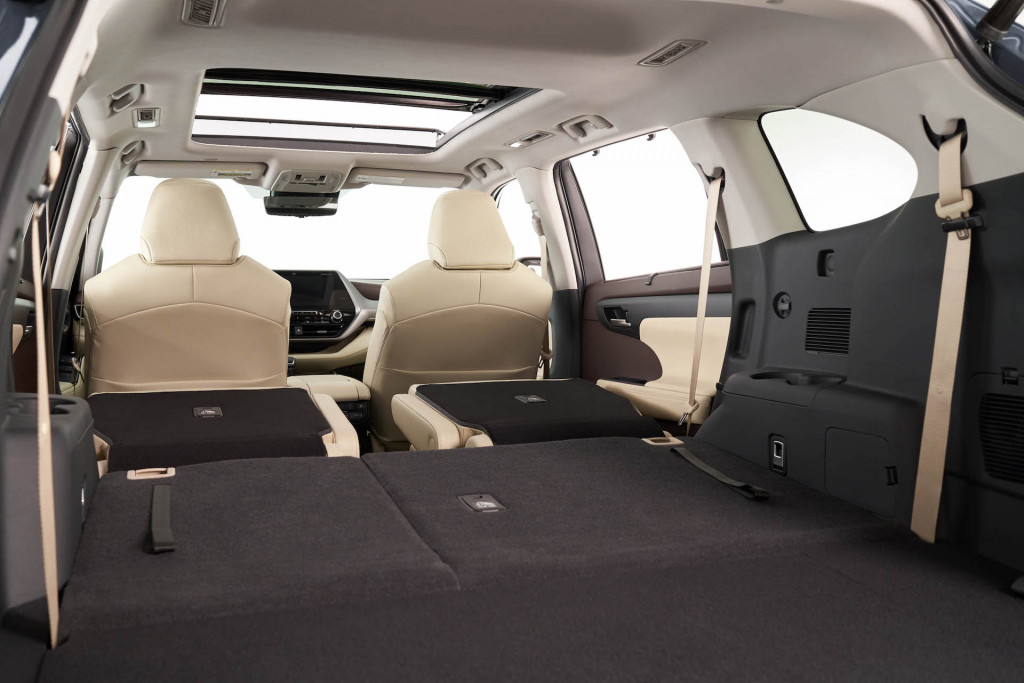When the 2020 Toyota Highlander Hybrid goes on sale next year, its EPA fuel-economy estimates may match most versions of the Corolla compact sedan.
And it has room for eight passengers.
To figure out just how Toyota eked out a manufacturer-estimated 34 mpg combined (an EPA number anticipated but not yet confirmed by the agency), Green Car Reports sat down with Highlander Chief Engineer Yoshikazu Saeki on the sidelines of the 2019 New York auto show. Speaking through a translator, Saeki laid out exactly what it took to bump the larger 2020 Highlander Hybrid an estimated 5 mpg over the 2019 Highlander Hybrid.
Powertrain downsizing, approximately 12 percent
Slicing a liter and two cylinders from the Highlander Hybrid's engine achieved a 12 percent improvement in fuel efficiency, Saeki said.
The new Highlander Hybrid uses a version of the RAV4 Hybrid's 2.5-liter inline-4 teamed with two or three electric motors. A larger battery in the Highlander than the RAV4 means that power climbs from 219 horsepower to 240 hp. Both share a transaxle with two coaxially mounted electric motors. One motor charges the battery while the other handles that task and works with the gas engine to provide motivation.
DON'T MISS: 2020 Toyota Highlander Hybrid arrives, promises 34 mpg combined
The Highlander continues Toyota's commitment to nickel-metal hydride over lithium-ion for its hybrid batteries.
"If we were able to achieve a smaller battery with nickel-metal hydride, we saw no reason not to," Saeki said. "We have a better stability of cost with nickel-metal hydride."

2020 Toyota Highlander
Lightweighting, approximately 2 percent improvement
The new Highlander rides on a version of Toyota's modular architecture, which it calls TNGA. Even though it is a couple of inches longer than the outgoing crossover SUV, Saeki estimates that the new Highlander weighs about 225 pounds less than its predecessor when similarly equipped.
Saeki said that the new structure's increase in high-tensile steel accounts for the largest reduction in weight, while the automaker looked to aluminum for smaller components.
Aerodynamics, approximately 4 percent improvement
"Aerodynamics was very important," Saeki said. "Underneath the chassis, we tried to create as flat a bottom as possible. Especially with SUVs that have a higher stance, the airflow underneath the car requires a lot of time in simulations."
Composite panels run nearly the length of the Highlander's underbody to create a largely flat surface. Even with the panels, the Highlander's approximately 8-inch ground clearance mirrors the outgoing model and should help it clear deep snow.
More drive options, but watch out for the details
The 2020 Highlander Hybrid comes standard with front-wheel drive.
"Our goal is to have more people experience the Highlander Hybrid," Saeki said. "The current model has only all-wheel drive, so there was a concerted push to make sure the hybrid was available in front-wheel drive as well."
Opting for all-wheel drive means an estimated 1 mpg combined hit due mostly to the weight of the additional motor that drives the rear axle. There is no mechanical connection between the axles, which cuts down on driveline loss typical to all-wheel-drive vehicles (and helps keep packaging unchanged, or nearly so, versus the non-hybrid model shown below).

2020 Toyota Highlander, 2019 New York International Auto Show

2020 Toyota Highlander

2020 Toyota Highlander
CHECK OUT: 2020 Ford Explorer Hybrid will carry a price tag over $50k
"It has a very strong rear motor," Saeki said, although Toyota has declined to give specific outputs for the electric motors.
Base versions of the new Highlander Hybrid also use smaller, low-rolling resistance tires, which boost mileage. The larger wheels fitted to Highlander Hybrid Limited and Platinum trim levels means a higher rolling resistance and more unsprung weight, which Saeki estimates may cut 1 mpg more. That means that a range-topping Highlander Hybrid Platinum will likely have a 32 mpg combined rating.
That's still 4 mpg better than the 2019 model, and it's enough for Saeki to briefly flash an uncharacteristic smile for an engineer at a Japanese automaker before diving back into the numbers.












